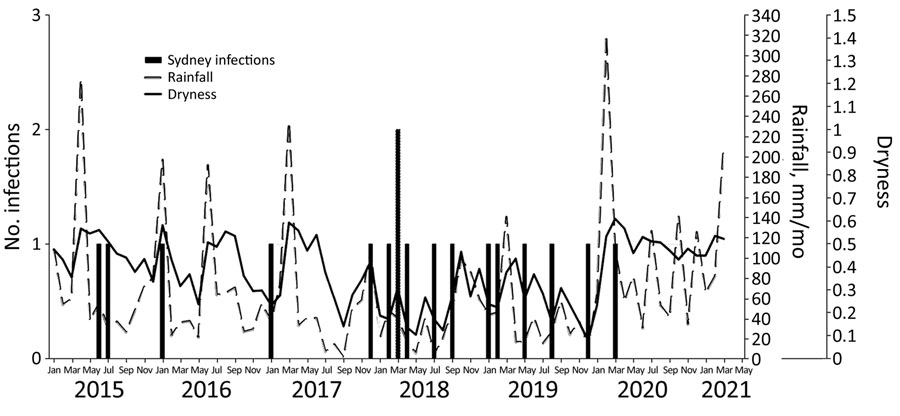Volume 28, Number 11—November 2022
CME ACTIVITY - Synopsis
Multispecies Outbreak of Nocardia Infections in Heart Transplant Recipients and Association with Climate Conditions, Australia
Figure 3

Figure 3. Nocardia cases among heart and lung transplant recipients compared with precipitation and dryness in Greystanes, the central location for cases in Greater Sydney, New South Wales, Australia, June 2015–March 2021. We defined dryness as the ratio of evaporation to potential evaporation, such that 0.0 is perfectly dry and 1.0 is perfectly wet.
1These authors contributed equally to this article.
Page created: September 20, 2022
Page updated: October 21, 2022
Page reviewed: October 21, 2022
The conclusions, findings, and opinions expressed by authors contributing to this journal do not necessarily reflect the official position of the U.S. Department of Health and Human Services, the Public Health Service, the Centers for Disease Control and Prevention, or the authors' affiliated institutions. Use of trade names is for identification only and does not imply endorsement by any of the groups named above.